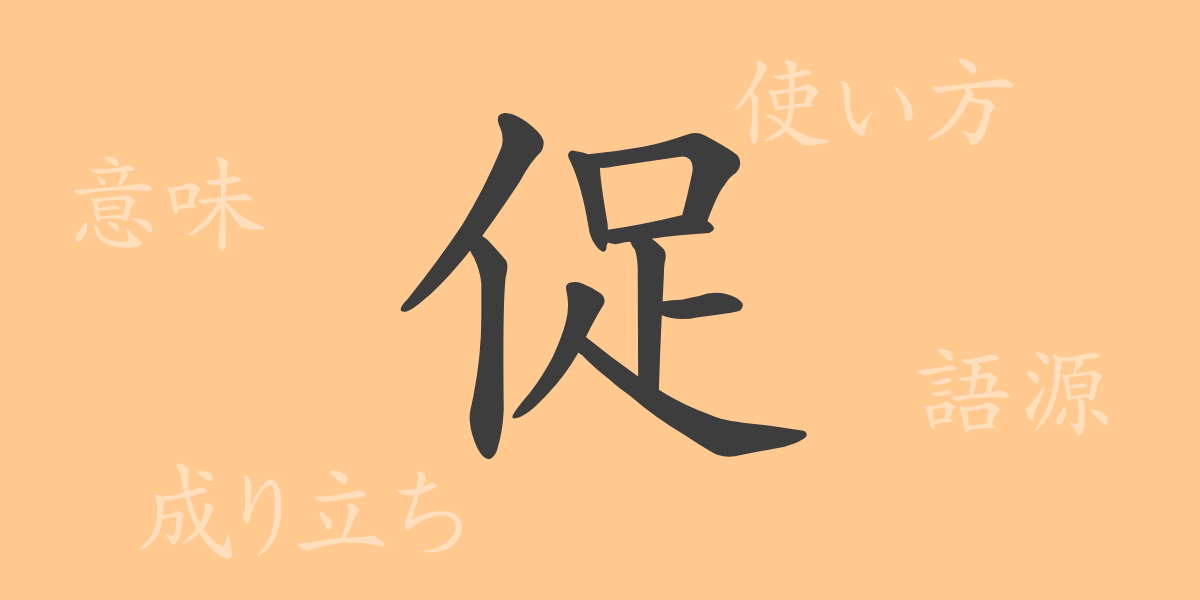The beauty of the Japanese language is reflected in its delicate and rich characters. One such commonly used Kanji is “(促)”, which permeates both everyday conversations and written language. However, beyond its simple shape lies a profound history and meaning. This article delves into the origin, meaning, usage, pronunciation, and related idioms of “(促)”. Join us as we explore the world of “(促)” while experiencing the depth of the Japanese language.
Origin of “(促)” (そく – Soku)
The Kanji “(促)” originated from ancient China, combining the radical representing “foot” with the phonetic component for “bundle”. Originally signifying “tying the foot to hurry along”, it evolved to convey meanings related to urging or promoting something, seen in words like “促進” (sokushin – promotion) and “促す” (unagasu – to urge).
Meaning and Usage of “(促)” (そく – Soku)
“(促)” carries meanings such as “to urge” or “to prompt”, often used to hasten or encourage actions. In business contexts, terms like “促進” (sokushin – promotion) and “促す” (unagasu – to urge) are frequently encountered. It is also used psychologically to influence behaviors.
Readings, Stroke Count, and Radical of “(促)” (そく – Soku)
Basic information about the Kanji “(促)” includes:
- Readings: On’yomi (音読み) ‘ソク’ (soku), Kun’yomi (訓読み) ‘うながす’ (unagasu)
- Stroke Count: 9 strokes
- Radical: 亻 (にんべん – ninben)
Idioms and Proverbs Using “(促)” (そく – Soku) and Their Meanings
There are several idiomatic expressions and proverbs incorporating “(促)”:
- 促進 (sokushin): Accelerating or promoting something.
- 促成 (sokusei): Assisting natural growth to hasten it.
- 促請 (sokusei): Repeatedly urging or requesting.
- 催促 (saisoku): Urgently prompting or pressing for something.
- 時促 (tokisoku): Indicating that time is pressing or urgent.
These expressions and proverbs are commonly used in daily life and business, conveying nuances of prompting action.
Conclusion on “(促)” (そく – Soku)
The Kanji “(促)” holds a richness of meaning that surpasses its simple form. In our daily lives and in business, we often encounter this Kanji, which serves to urge progress or mark the passage of time. Through this exploration, you’ve gained a deeper understanding of “(促)”. As you continue to appreciate the history and meanings encapsulated in each Kanji, may you continue to master the rich Japanese language.

























